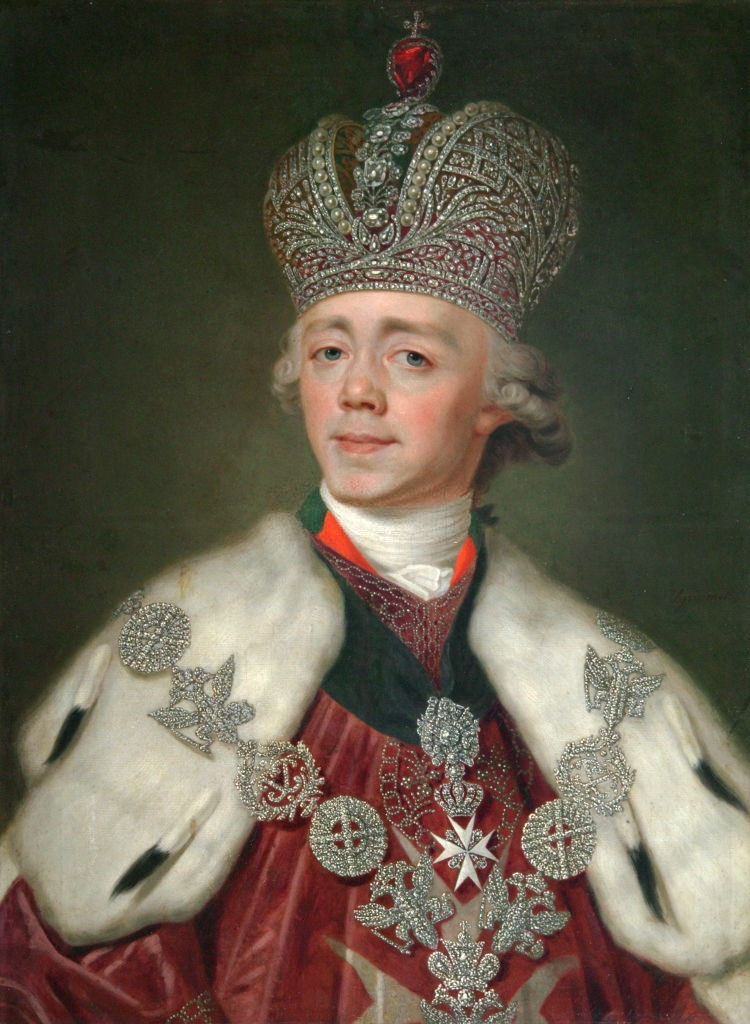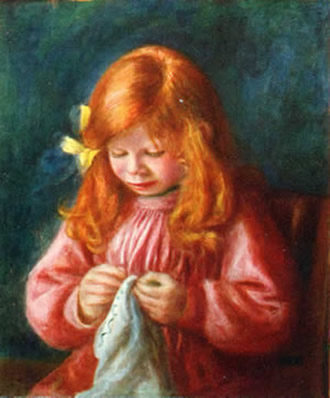|
|
Post by Woland on Apr 28, 2020 12:13:29 GMT -5
Carlo Rossi was an Italian architect born in Naples. He got his first taste of Russia when he accompanied his ballerina mother to Russia. Having completed his studies in Italy, he was invited to design buildings in Moscow in 1806 (burned down by Napoleon's army during the invasion). A couple years later he went to St. Petersburg, the city most synonymous with his neo-classical works: The Mikhailovsky Palace, the Alexandrinsky Theatre, part of the Winter Palace, Yelagin Palace to name a few. He died of cholera in 1849.
|
|
|
|
Post by Woland on Apr 28, 2020 13:55:46 GMT -5
Paul I spent his entire life overshadowed by his mother Catherine the Great, as a boy he was cared for by his great-aunt Empress Elizabeth until her death in 1762. His father Peter III was crowned then deposed by Catherine when he was just 8 years old. Once he turned 18 he wanted to be Tsar, believing a male ruler to be preferable to a female, but Catherine wasn't letting that happen. The two had a distant relationship during his mother's reign; Catherine even preferred her grandson (future Alexander I) to Paul. After her death in 1796 Paul became Tsar (he had to quash a rumour he was an illegitimate child). Paul was diametrically opposed to his mother's liberal-minded worldview, completely reversing many of her policies. He also wanted the generals to wear Prussian uniforms (copying his father's footsteps in more ways than one), his love of parades saw many generals quit the army, rousing distrust and hatred among the ones who stayed. His plan to invade India turned out to be the final straw, in 1801 he was assassinated in his bedroom by his own army generals, ending his unpopular 4 year reign as Tsar of Russia.

|
|
|
|
Post by Woland on Apr 28, 2020 19:08:20 GMT -5
Ever had a really embarrassing childhood photo you wish you'd never see? Jean Renoir has several thanks to his father Pierre Auguste's penchant for impressionism, and love of his son's long hair. Jean Renoir was born in Montmartre in 1894, served in the French cavalry and as a reconnaissance pilot in the first world war; he was left with a permanent limp from his leg wounds which ironically allowed him to indulge in silent cinema during his recuperation. During the 20s he made unsuccessful short films starring his wife Catherine Hessling (she was also a model for Jean's father until his death in 1919, she married Jean a year later). In the 1930s Jean Renoir was responsible for some of the most memorable films of that decade: "La chienne" (later remade by Fritz Lang into "Scarlet Street"), Boudu saved from Drowning, the crime of Monsieur Lange, the lower depths (based on Gorky's play), la bete humaine, la Grande illusion (often rated among the greatest films ever made) and the Rules of the Game (ditto). Those last two films were banned by the nazis, after Germany invaded France he fled for Hollywood. His American movies didn't live up to his great french films, after the war he made "The river" in India (based on a Rumer Godden novel) before making some more musicals back in France. With funding tightening up, Jean switched to writing during the 60s and 70s, received a Lifetime Achievement Oscar in 1975, passed away in 1979 at his home in Beverly Hills.
 |
|
|
|
Post by Woland on Apr 29, 2020 12:32:58 GMT -5
John Tyler served as the 10th President of the USA from 1841-1845, he was elected as vice-president under William Henry Harrison only for the latter to die shortly after taking office. Mockingly referred to as "his Accidency", Tyler didn't always get respect from his peers for his somewhat fortuitous path to the Presidency. Astonishingly despite being born in 1790, John Tyler has 2 living grandsons: Tyler had 8 children with his first wife and 7 children with his 2nd wife, his son Lyon Gardiner Tyler (born 1853) also had lots of children with his 2nd wife at a late age, the two living sons (grandsons of John Tyler) were born in 1925 and 1928.
|
|
|
|
Post by Woland on Apr 29, 2020 18:01:46 GMT -5
Aleksey Pisemsky was a Russian novelist and playwright, at one time in the 1850s he was spoken of in lofty terms, only to fall out of political favour with the journals of his time. This portrait by Ilya Repin was made one year before Pisemsky's death.
|
|
|
|
Post by Woland on Apr 29, 2020 20:14:15 GMT -5
Marina Mniszech was a Polish noblewoman who either had terrible eyesight or was willing to do anything to convert Russia into Catholicism. During the "Time of Troubles" in Russia, Boris Godunov was the unpopular Tsar of non-Rurikid blood, accused of scheming his way to the top and having the "rightful" heir Dmitri Ivanovich murdered (Dmitri was a son from Ivan the Terrible's 6th wife, dubious claim at best). With Boris' popularity at an all-time low, a pretender claiming to be the "real" Dmitri Ivanovich capitalised on the national malaise by marching on Moscow and taking the throne after Godunov died from a long illness.
Marina was invited to be the False Dmitri's wife and Tsaritsa of Russia, only her decision not to convert to Orthodoxy incited such outrage and suspicion the False Dmitri was murdered 2 weeks after the wedding. A couple years later and further dissatisfaction with Tsar Vasily IV, another False Dmitri sprung up, Marina was wheeled in to "acknowledge" this one was "the real Dmitri" (she had nothing better to do with her life) only for this guy to get himself murdered. Alas Marina wasn't finished there: She later rallied round her son Ivan Dmitrievich as the "rightful" heir to the throne, but by this time nobody was listening, Mikhail Romanov was the rightful Tsar and decided he'd had enough of her shenanigans: He had the little baby executed and Marina locked up in prison where she later died/was strangled.
|
|
|
|
Post by Woland on Apr 30, 2020 13:33:17 GMT -5
Frederick Gustavus Barnaby was a British Army officer in the Victorian era. Standing at 6 foot 4, he engaged in ballooning and travels to Spain and Russia before he even saw active service in the army, serving as correspondent for The Times in Spain and reported on an expedition to Sudan. In 1875 he got into his head to travel to Khiva (modern day Uzbekistan) via Asiatic Russia, on horseback, while Khiva was warring with the Russians. After accomplishing this marvellous feat he witnessed the Russo-Turkish war in 1877, crossed the English channel in a balloon, fought in the British-Sudan conflict where he was killed in hand-to-hand combat at Abu Klea, he was 42 years old. This portrait was by James Tissot in 1870.
|
|
|
|
Post by Woland on May 1, 2020 7:05:01 GMT -5
Fath Ali Shah Qajar was the second Shah of the Qajar dynasty in Persia from 1797 until his death in 1834. The arts flourished under his reign while Persia lost all its possessions in the Caucasus to Tsarist Russia. Famous for his beard stretching below his wafer-thin waist, infamous for his enormous number of concubines (800 - 1,000+), children (103) and grandchildren (588), one legend claims he had a special slide installed in his harem for "activities".
|
|
|
|
Post by Woland on May 1, 2020 15:15:57 GMT -5
Orest Kiprensky was a Russian portrait artist, Alexander Pushkin being his most famous work. This self-portrait was made at 46 years old, just before his last trip to Italy.
|
|
|
|
Post by Woland on May 1, 2020 15:59:18 GMT -5
Countess Sophia Bobrinskaya (née Shuvalova) was married to Count Alexander Bobrinsky, a politician and genealogist and great grandson of Catherine the Great & Grigory Orlov. Sophia Bobrinskaya is 20 years old in this effervescent portrait by Karl Bryullov.
|
|